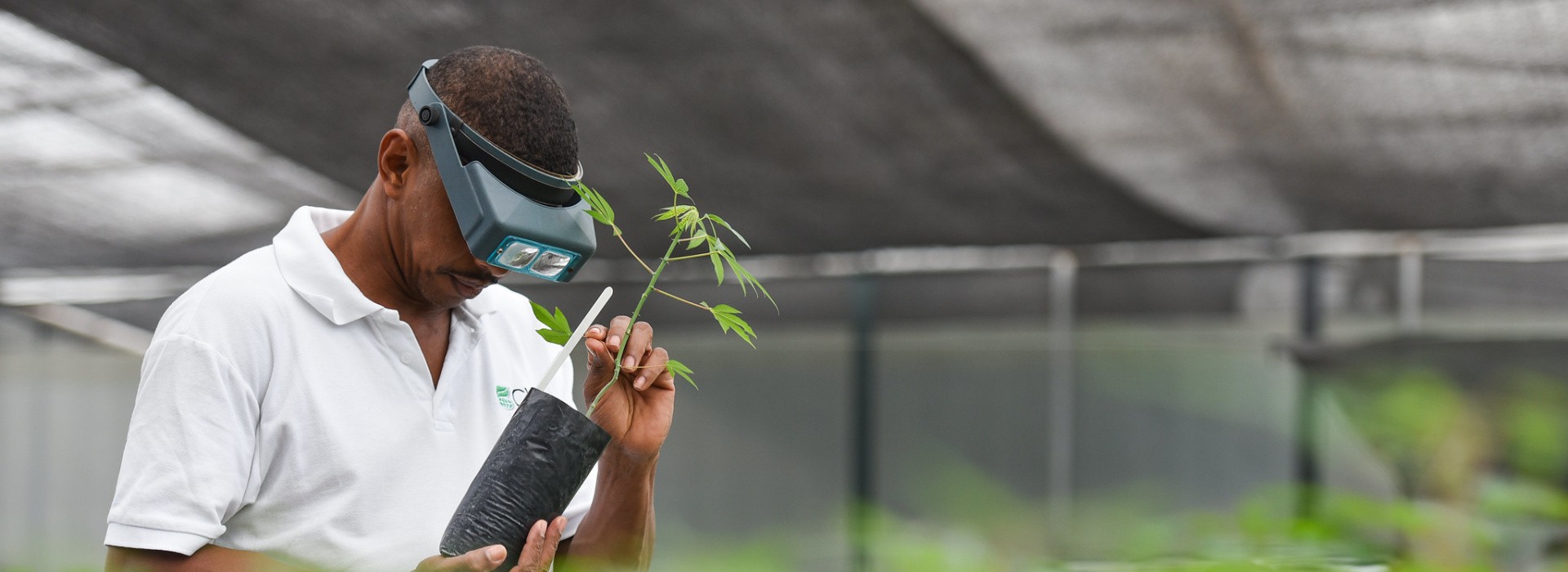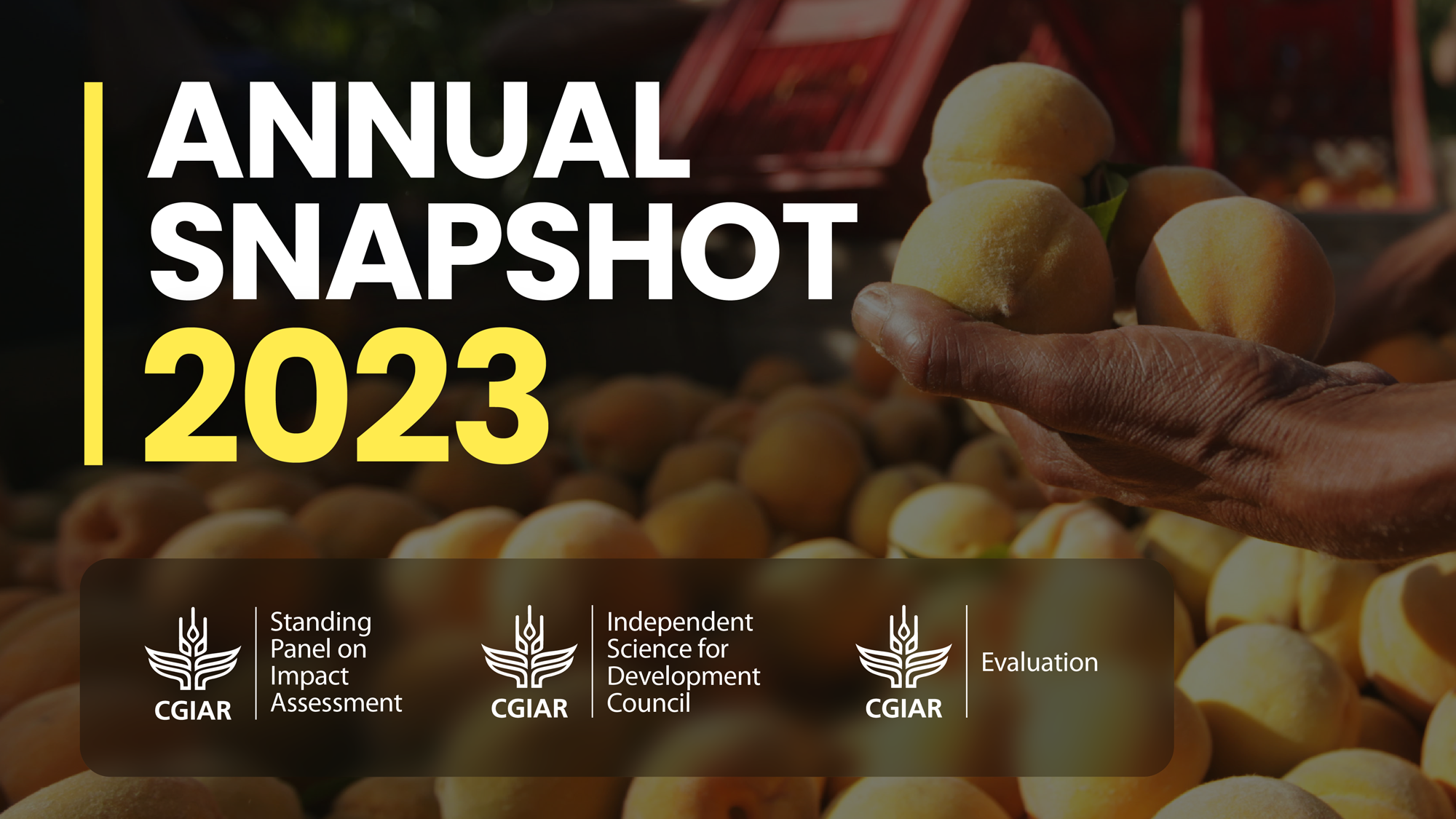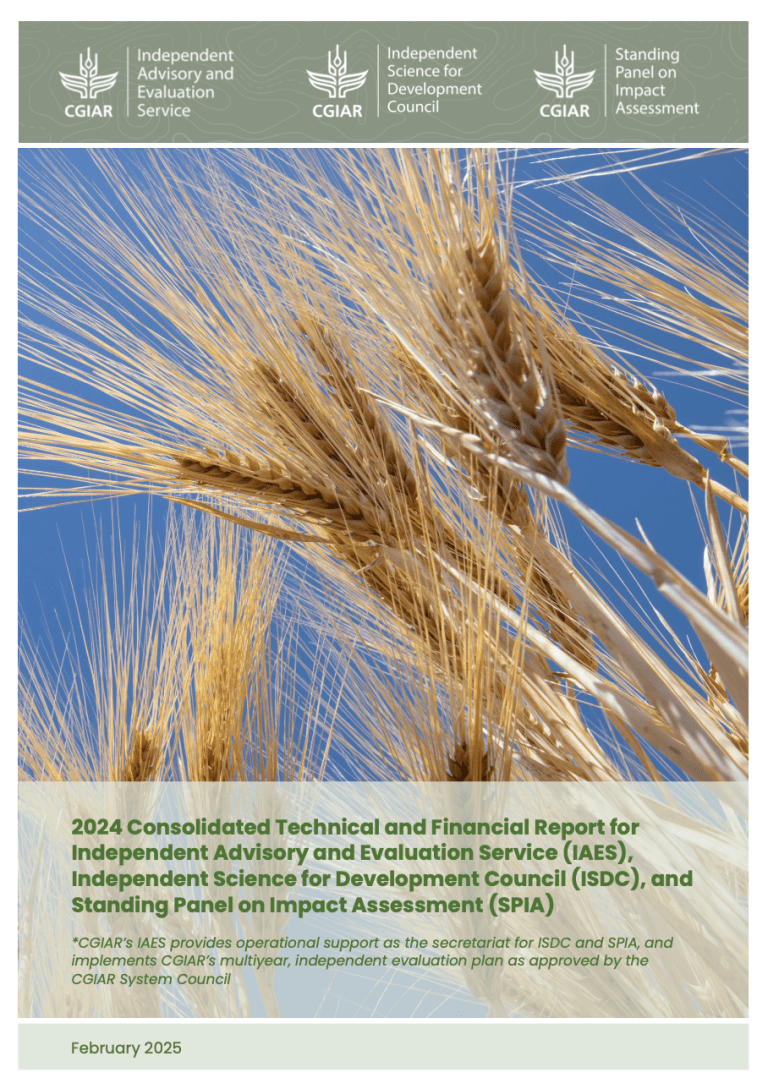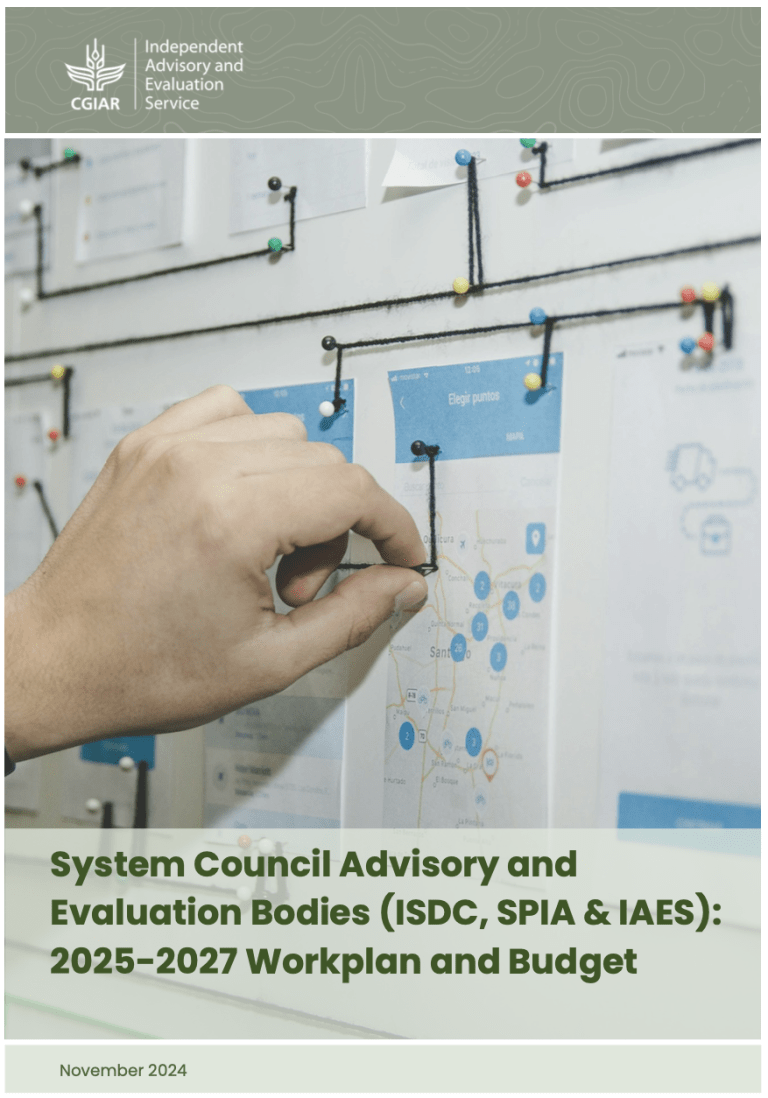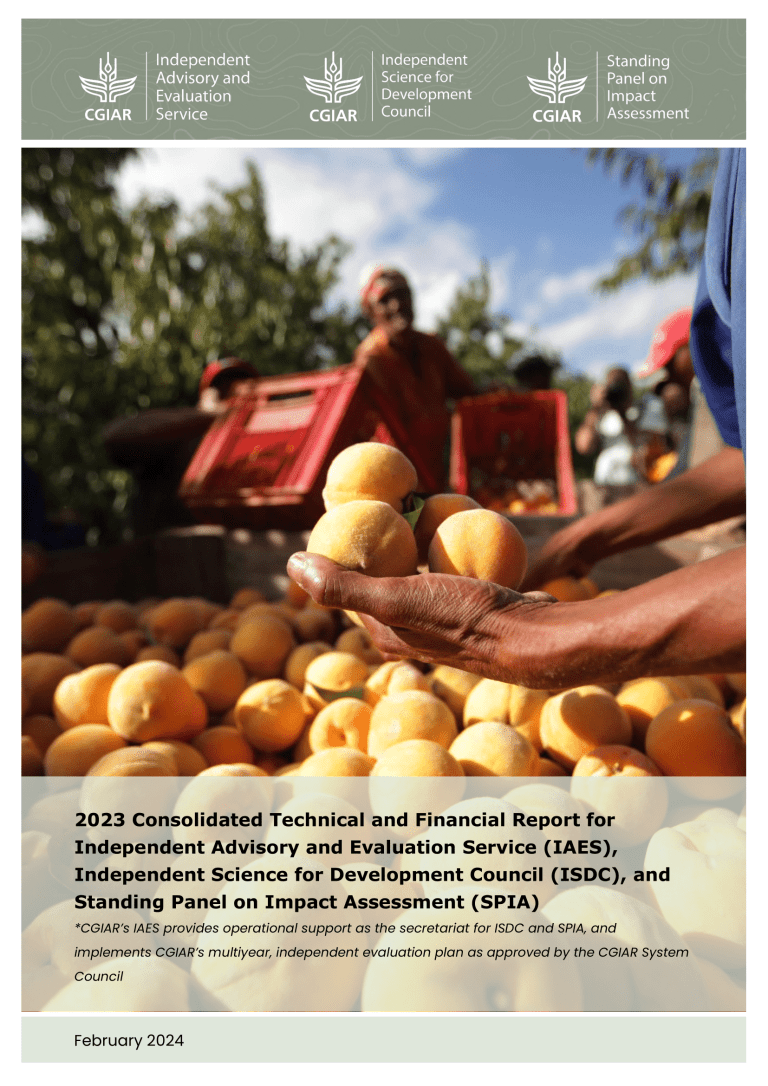"In any uncertain endeavor, a bias for action gets you started, but progress will require iteration."
– Amy Edmondson, Right Kind of Wrong: The Science of Failing Well.
During the Standing Panel on Impact Assessment’s (SPIA) meeting in 2023 at the International Maize and Wheat Improvement Center (CIMMYT) headquarters in Mexico, it was impressive to see just how much higher the no-till beds were compared to the surrounding terrain. Decades-old conservation agriculture plots had built up over time into a rich bed, using the previous season’s crop residue as a fertile foundation. Progress requires iteration, in this case, season after season of new growth.
Likewise, CGIAR’s independent science for development advisory, impact assessment and evaluation workstreams, supported by Independent Advisory and Evaluation Service (IAES), have been establishing a fertile bed for our ongoing independent activities to support CGIAR in 2024. Our 2023 Annual Snapshot will inform you of these activities.
In 2023, the IAES’s Evaluation Function ended the full-cycle evaluation of CGIAR Research Programs and Platforms that began in 2020. 2023 marked the culmination of many SPIA-supported studies implemented under its six-year work plan. Additionally, Independent Science for Development Council (ISDC) finalized commissioned projects on megatrends and did the bulk of the work for a guest-edited, special inclusive innovation issue of the journal, Agricultural Systems.
Moving beyond 2023, CGIAR is still undergoing change. Again, progress requires iteration! The above quote from Amy Edmonson applies to institutional change just as much as innovation systems, resonating in CGIAR’s context. While steadfastly continuing the course of the 2030 Research and Innovation Strategy, a unified governance review and new leadership bring fresh ideas on how best to deliver the project set. CGIAR’s change process towards an integrated partnership continues to be iterated.
Therefore, in 2024, we consider how the independent workstreams could contribute to such iteration. The IAES, ISDC, and SPIA consolidated workplan outlines the plans for the year. We will move forward with learning-oriented developmental evaluations for Science Groups to support Portfolio 25 formulation. SPIA will advance strong efforts with multiple stakeholder groups to bring forward evidence from country and causal studies supported under the 2019-2024 plan. ISDC will independently review a portfolio and proposals setting out the CGIAR project set from 2025 onward.
While considering iteration and progress, I close with a note about a spectacular ISDC and IAES visit to Kenya in mid-February, where we saw an impressive synergy of CGIAR Research Centers on the International Livestock Research Institute (ILRI) campus. A science fair illustrated strong partnerships among CGIAR Centers and Kenyan partners, advancing research for development in Kenya and the East and Southern Africa (ESA) region.
Perhaps one of the most striking parts of the visit was seeing ILRI’s Kapiti research facility and learning about the long history of this magical place. Originally a retreat area for senior staff, then apparently long disused, the farm has more recently taken on government conservation status and provides a unique environment for cutting-edge global public goods research on climate change and livestock-wildlife interactions related to zoonoses – an ILRI farm serving multiple CGIAR Centers and academic research teams.
As CGIAR considers its comparative advantage moving forward into Portfolio 2025, the status of assets like Kapiti, and a progressive vision on how to best use these assets, should be top of mind. ISDC, in its Technical Note on comparative advantage, wrote, “the best way to learn about comparative advantage may be to consider an organization’s characteristics and their implications for potential production. Sources of comparative advantage can be broadly grouped into four categories,” one of which is biophysical capital. Assets, like the lands at Kapiti or genebanks and their collections held in trust by CGIAR Centers, and how to iterate and progress how assets are used, maintained and positioned, remain a vital part of CGIAR strategic iterations.
